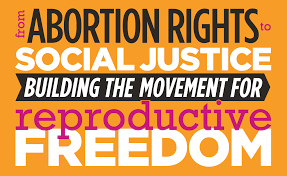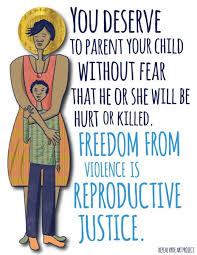 This past weekend, I had the pleasure of participating at the Civil Liberties and Public Policy Conference. This year’s theme was From Abortion Rights to Social Justice: Building the Movement for Reproductive Freedom. I was there presenting my very first workshop about the focus of The HEAL Project— sex education. The workshop I nervously presented was uncomplicatedly named, “How Sex Ed Can End Child Sexual Abuse.” I wondered if participants would steer away from the topic of child sexual abuse (CSA). I’d assumed that participants would rather go to one of the many other workshops presented by a line-up of stellar presenters. I wondered if I would stumble upon my words, have another anxiety attack, and or fail at my attempt to tackle this work—this next step in my journey of healing.  I also wondered if people would understand why I was talking about CSA at a reproductive justice conference. What does reproductive Justice (RJ) have to do with children? When we hear RJ, we often conjure up ideas of birth control, abortion issues, the right to parent or not. We think of women and their rights to their bodies and the right to make decisions about their bodies. RJ is about all of that and then some. Part of the work that I am embarking on, is not only to aid in a cultural shift around (how to teach) sex education but it’s also about making connections to other movements. RJ is one of those movements. Reproductive Justice is a positive approach that links sexuality, health, and human rights to social justice movements by placing abortion and reproductive health issues in the larger context of the well-being and health of women, families and communities because reproductive justice seamlessly integrates those individual and group human rights particularly important to marginalized communities. Racial Justice does include the sexual health and human rights of children, young people, women, girls and trans people. In dissecting CSA, the sexual health and rights of children, is about the right to develop their sexual selves organically without the control, persuasiveness or abuse of adults or older children. It is about the right to information that can help nurture that growth, give tools to prevent or combat such abuse and the right to express the development of gender and sexuality on their own terms. This was the conversation I wanted to have with participants. I also wanted to expand my/their thinking around oppression. In this context, the systematic form of oppression of children, specifically as it pertains to withheld knowledge, information, and resources. In the argument for abstinence only “sex ed,” it is clear that abstinence alone does not work. A combination of abstinence and sex education that incorporates topics of sexual oppression, gender identity, sexual orientation, information about STI/HIV and pregnancy prevention, does. Contrary to some beliefs, giving children/young people information about sex does not propel them to participate in sex acts. Fear-driven and sometime religious reasoning for omitting the sex talk, only delays vital information that is needed at all stages of life and helps inform adult relations and sexual interactions. The things we learn as children/young adults shape the decisions we make later on. Whether it be about developing your gender identity, harm reduction approaches to street harassment, self-care/love, developing healthy friendships, understanding boundaries, good touch vs bad touch, sexual violence, puberty, desire—this is sex(uality) education. As adults, parents, guardians and caregivers, we are the “keepers” of our children. We want to protect them, but what if withholding information about sex(uality) makes them vulnerable? Would withholding such information be considered ageism? Do children and young people have the right to know? I had much to present and many questions to ask. Fifteen minutes before the workshop was to begin, eager participants spilled in. Seat after seat, was filled and eventually a sign at the door— Workshop Full. Participants wanted to hear what I had to say, understood the connections to the RJ movement, and more so, realized that the fight to end CSA is a broader fight that links RJ, sexual liberation, women’s rights, racial justice, youth empowerment, disability rights, children’s rights, immigration rights, economic justice movements and beyond. Those of us who live at the margins, women, trans, people of color, people with disabilities, people living in poverty, queers, and children are the most vulnerable with intersecting experiences in oppression. Therefore linking these struggles and strategies are vital for collective empowerment and justice. It makes sense. Doesn’t it? We believe that ending child sexual abuse is possible. Moreover, our work is grounded in the belief that ending child sexual abuse is one of the most strategic things we can do to end violence and create safe, thriving communities.
0 Comments
Leave a Reply. |

 RSS Feed
RSS Feed